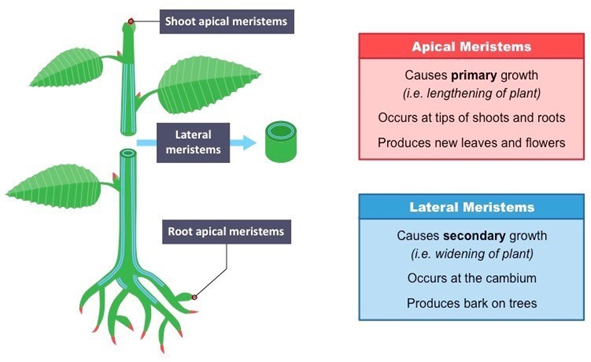“By reimagining design as a series of elemental rules and growth mechanisms that react to stimuli and the environment, the design of complex systems could be simplified and unknowable behaviour could be used as a tool for innovation.
Blind Watchmaker is investigating the theoretical aspects of this approach and the practical implications of using them in engineering design.”
The Blind Watchmaker system consists of three discrete but connected processes of which the main one is ‘Growth’ where the seed is ‘planted’ in the environment in which it will grow. This environment produces stimuli, for example, stress analysis in Abaqus, to which, the cell will react and grow according to a response system setup in within the seed.
Development of this response to stimuli and resulting growth mechanism has directed the team to nature’s laws and the growth mechanisms in plants. The action of growth, primary and secondary as well as budding and branching is all controlled in plants by the action of a hormone called auxin. The presence, and sometimes absence of auxin combined with its concentration stimulates growth in the plant’s stem, root, branch or bud.
The role of auxin in plant growth
Primary growth in plants involves the lengthening of the plant in the axial direction through an increase in the number of cells in the plant (division). This growth occurs at the apical meristems, Figure 1. Meristems are tissues of undifferentiated cells at the tip of the roots and shoot of the plant. During primary growth budding occurs where ‘embryonic meristems’ are left behind on the shoot.
Apical meristems produce auxin where it exists in high concentrations promoting growth in this part of the plant. The production of auxin in the apical meristem and subsequent diffusion downwards inhibits growth in the lateral buds, Figure 1, which remain dormant. This is known as apical dominance. If the apical meristem is present and the concentration of auxin is high, the buds and therefore branches and leaves do not grow. If the apical meristem is removed the concentration of auxin falls in the lower-most parts of the shoot allowing growth in the bud to occur. Auxin acts as a negative feedback mechanism in bud growth.
Secondary growth involves the widening of the plant in the lateral direction by increasing the size of the cells in the plant. Cell size increases as a result of increased water uptake in the cambium (undifferentiated cells between the lateral layers of the shoot). In secondary growth, the presence of auxin, just like in the apical meristem, promotes cell growth.

Figure 1 Meristems and plant growth
Source: https://ib.bioninja.com.au/higher-level/topic-9-plant-biology/untitled-2/meristems.html
Conceptual application to Blind Watchmaker
Gravitropism (also known as geotropism) in plants promotes growth in the ‘vertical’ direction i.e. opposing the direction of gravity. The growth of our ‘cells’ (the model) will begin and continue in a specified x, y or z direction just like gravitropism in plants.
Primary growth in plants, through the apical meristem occurs due to division of the cells within the meristem, in the presence of auxin. Cell division of our model ‘cells’ will occur at the tip of the ‘cell’, in response to a high concentration of ‘hormone’ in the parent cell. This will result in a single layer ‘cell’ from which growth continues. Secondary growth can occur in the parent ‘cell’ just as in plants.
In our three dimensional world, growth can occur in the x, y and z directions or, for a single layer ‘cell’, resulting from division, in a direction determined by a vector, governed by magnitudes in x, y and z directions. The magnitudes of these directions can be controlled by direction genes and the presence of the ‘hormone’ controlling growth in whichever one or more of these directions. If the ‘cell’ is in the presence of its controlling ‘hormone’, a percentage increase of the magnitude in the gene can be applied in that direction, increasing growth. Thus growth in a specific direction is promoted by the presence of a hormone – just as in plants.
